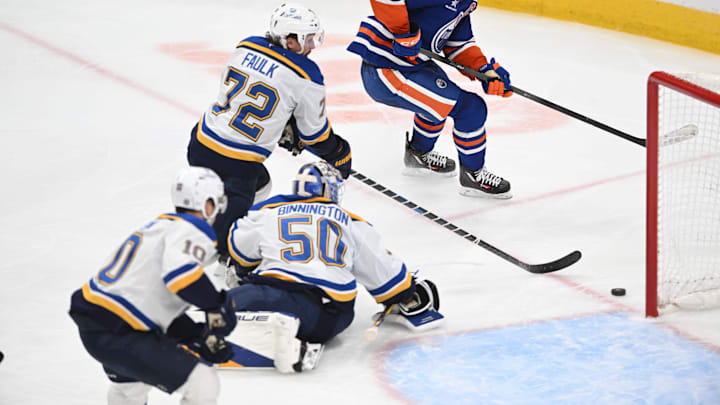The St. Louis Blues have lost two straight, and it may be causing some fans to start hovering their hand over that panic button. But to be honest with you, I wouldn’t, even if the Blues dropped to the second wild card spot.
If you check out the standings here on Thursday afternoon, you’ll find that the Blues are tied with the Wild in points. So, what made the Blues fall down a notch, you may ask? If you’re now paying attention to the Blues for the first time or if you’re a returning fan looking for a refresher, I’ll give you the answer.
As you may know, the NHL plays 82 games a year, but at any given point, teams may be tied in the standings. So, to break the tie, they need to implement tiebreakers. In this situation, the Blues have played one more game than the Wild. This means the Wild have ‘one game in hand,’ giving them a higher points per game total because they’ve played one fewer game than the Blues.
What if the Blues and Wild have the same points total after 82 games?
Should that occur, the NHL will revert to other tiebreakers. Should the Blues and Wild finish the season with 97 points apiece, hypothetically speaking, the next tiebreaker will come up. At 97 points apiece, the NHL will use regulation wins (RW).
So, if the Blues end up with more regulation wins than the Wild, they will finish the season in the No. 1 wild card spot. Should they continue to trail the Wild, they’ll stick around in No. 2. If both teams are tied here, then it would go down to regulation and overtime wins (ROW). And if they’re still tied, total wins - regulation, overtime, shootout wins - will come next.
But it would get even more interesting should both teams continue to remain tied. If the NHL looked at all of the above and there’s still a tie, then it will come down to points in head-to-head matchups. If there was still a tie at that point, it would come down to goal differential, and then, finally, goals scored.
Do the Blues and Wild meet again throughout these final games?
Unfortunately, the answer is no. Had the two teams played one another, it would’ve given one of them more of an edge. Even if the Blues ended up in the No. 2 wild card spot should they have met and they lost to Minnesota, at least they would know who to prepare for when the playoffs began.
Note that, as of Thursday afternoon, the Blues haven’t yet clinched a playoff berth. But the standings show only the Calgary Flames as the only other team in the hunt. Therefore, the Blues chances of sneaking in have increased exponentially over the last few days as the Utah Hockey Club and Vancouver Canucks have bowed out.
So, the odds are ever in the Blues favor. Just one more win and a Flames loss will guarantee a spot that we’ll see a few playoff games in Arch City.
